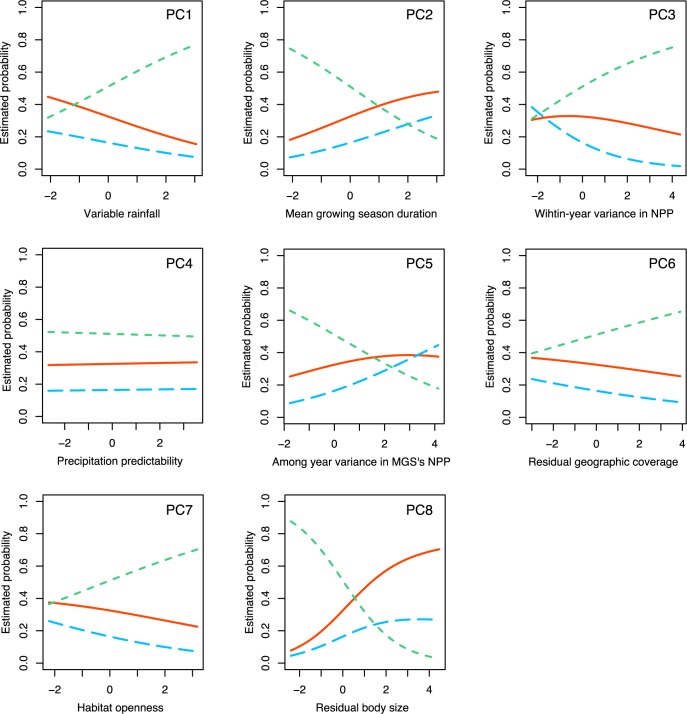Fig 4. Ecoclimatic and life-history correlates of non-family-living (green dotted line), family-living (orange solid line), and cooperative breeding species (blue dashed line); N = 2,968 bird species (excluding cooperative breeding species with non-kin helpers only).
Lines reflect the predicted probabilities of occurrence of respective social systems estimated from phylogenetically informed multinomial models (see Table 1). Family-living and cooperative breeding species are associated with locations that have abundant but variable precipitation (PC1), a longer mean growing season (PC2), and a higher among-year variance in net primary productivity (NPP) during the growing season (PC5). Moreover, these species live in denser habitats (PC7) and have a larger body size (PC8). Cooperative breeding species are associated with higher within-year variance in NPP (PC3). MGS, mean growing season.

